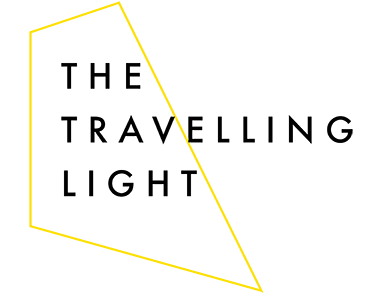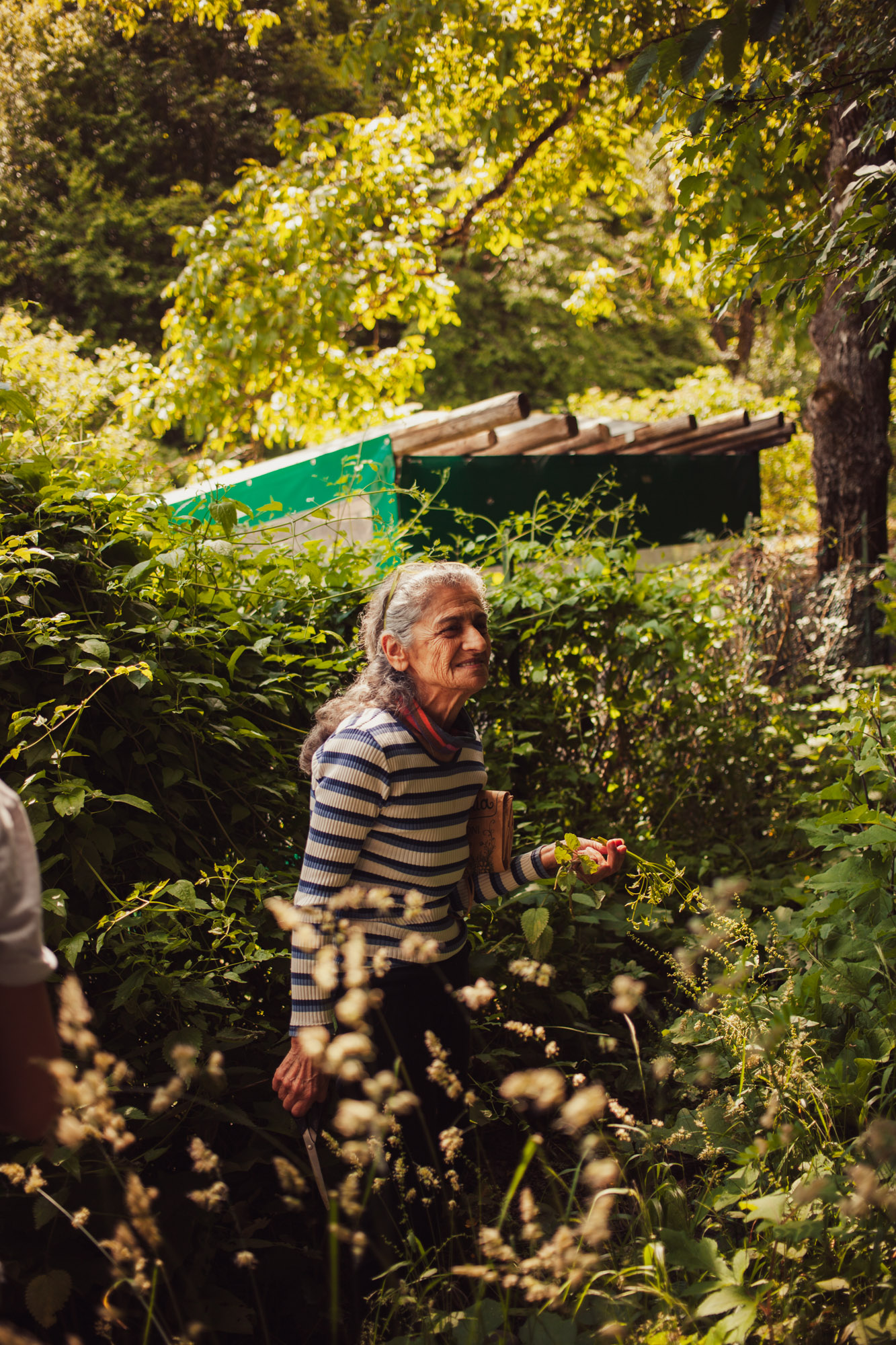
Photos by Katie McKnoulty
I’d heard stories about La Strega di Monte Nerone, The Witch of Nerone Mountain, also known as, Loretta Stella. As I started to ask around I realized she was rather famous here in the Marche region of Italy, everyone had a strega story to tell.
“She lives alone in her house on a mountaintop and spends her days wandering the forest foraging for wild herbs and plants.”
“She cured my asthma with herbs when I was a baby and mainstream medical treatments didn’t seem to be working.”
“She’s very private. I tried to get in touch with her once without much success; she won’t let you take her picture, but you can try... ”
I was intrigued; I wanted to meet this strega. I always suspected there were people with secret and very interesting lives and livelihoods hiding in these Marche hills. I also suspected it would take time for them to reveal themselves as I fell deeper and deeper into living life in this region.
As it turned out, I didn’t have to wait very long for this particular secret to reveal itself. In June this year, a friend invited me to join her and her friends on a day foraging for herbs and plants in the forest with Loretta Stella, the strega herself, the Sunday of the Summer Solstice. I immediately jumped at the chance to meet her. “You’re the last participant we’re accepting for the day, we’re full now”, they replied to my message via WhatsApp; I took that as some kind of sign I was meant to be there.
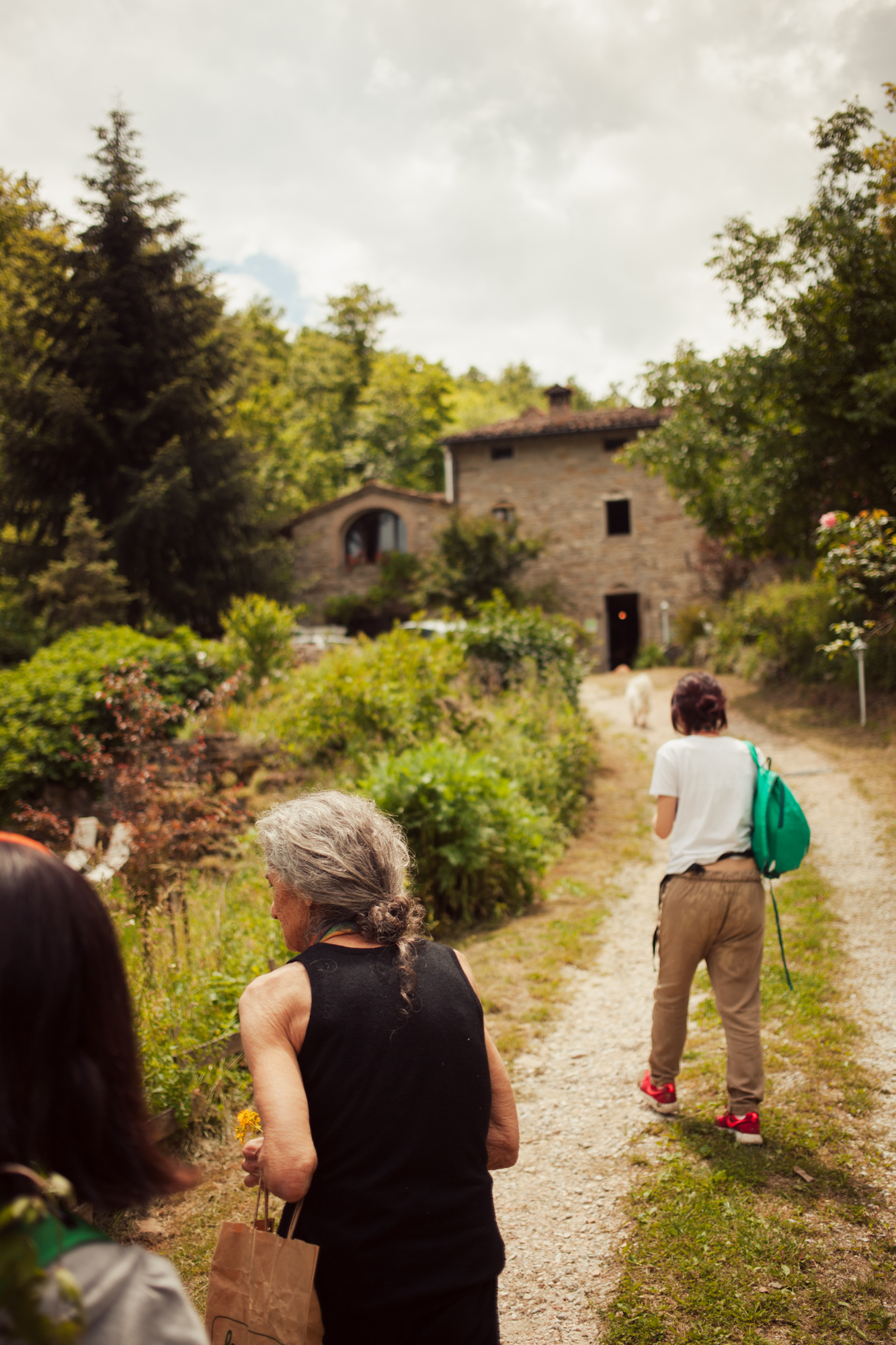

We arrived after an hour-long drive through the hills and valleys of the Marche to creative artist residence, ValdericArte, in Lamoli and immediately met Loretta herself on the walk up to the villa. Quiet, thin and small with long, wild grey-white hair, she looked every bit the ‘witch’, the mysterious figure I’d imagined.
We sat down together with the group assembled for the day, a mix of professionals in alternative health and herbalism and others simply interested in foraging wild food and herbs for themselves and their families. We started with flower-infused water and apricot-jam crostata tart, made on-site using flowers from the colourful ValdericArte garden which backdropped our introduction on the sunlit terrace.
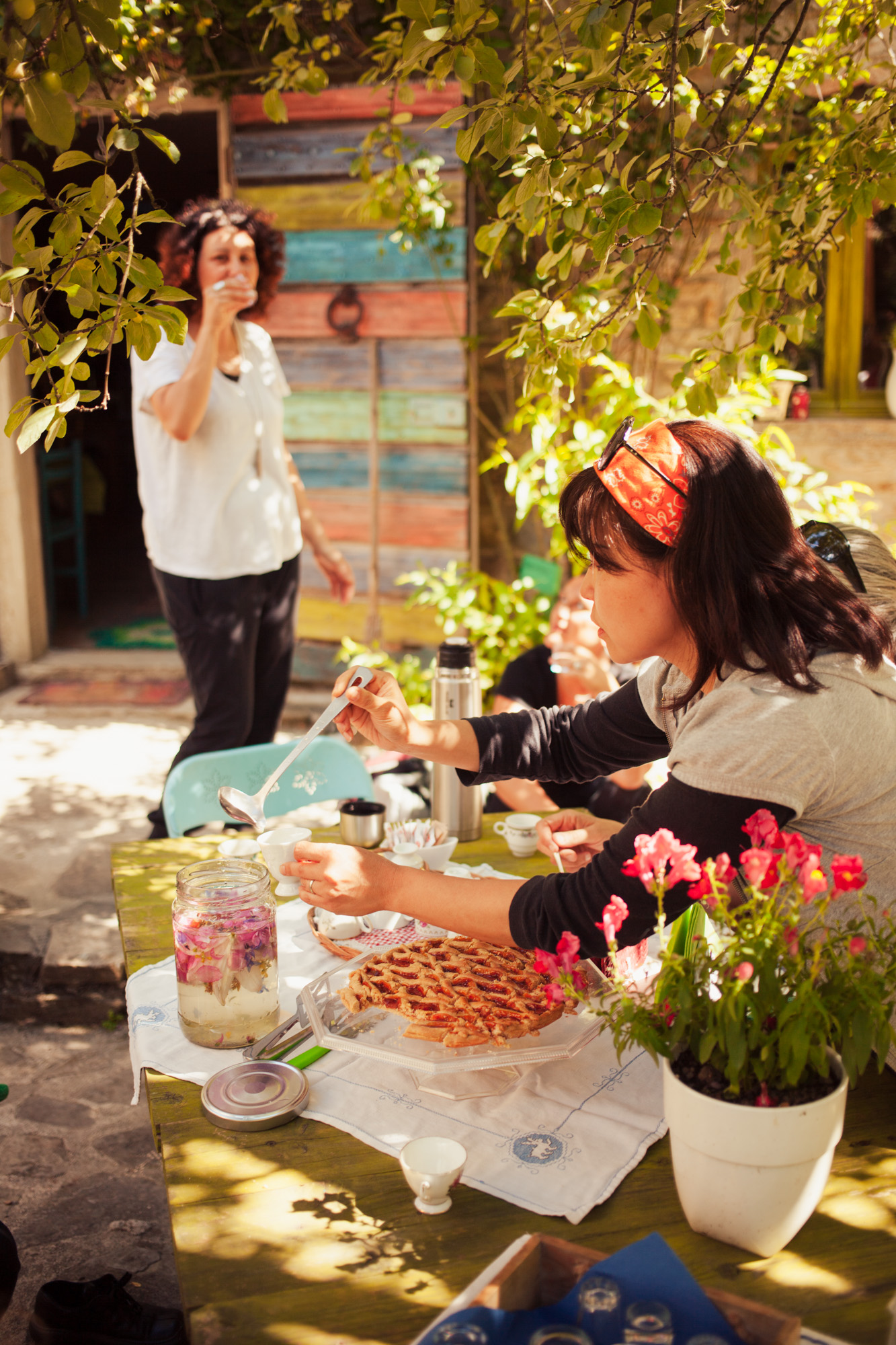
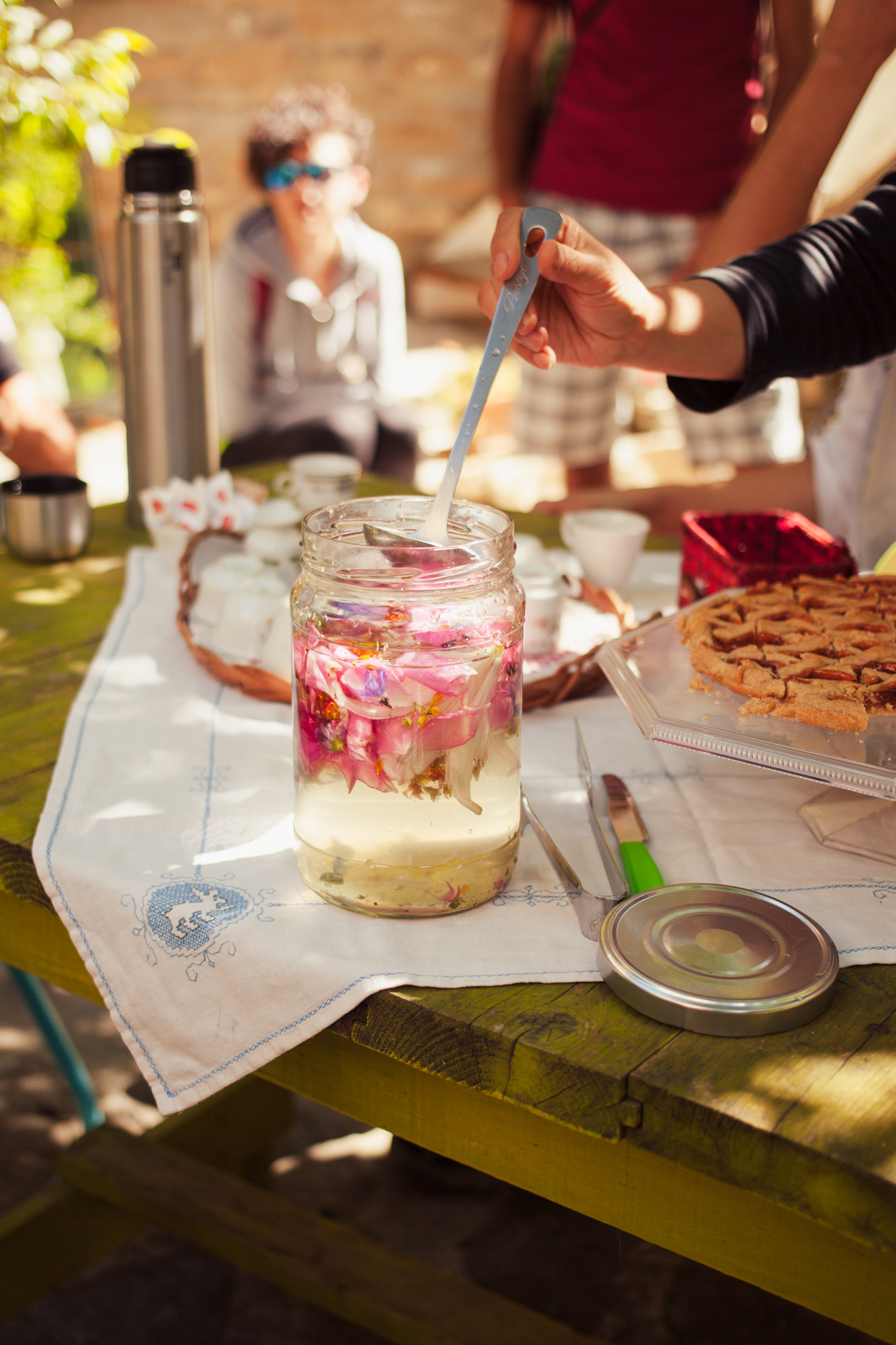
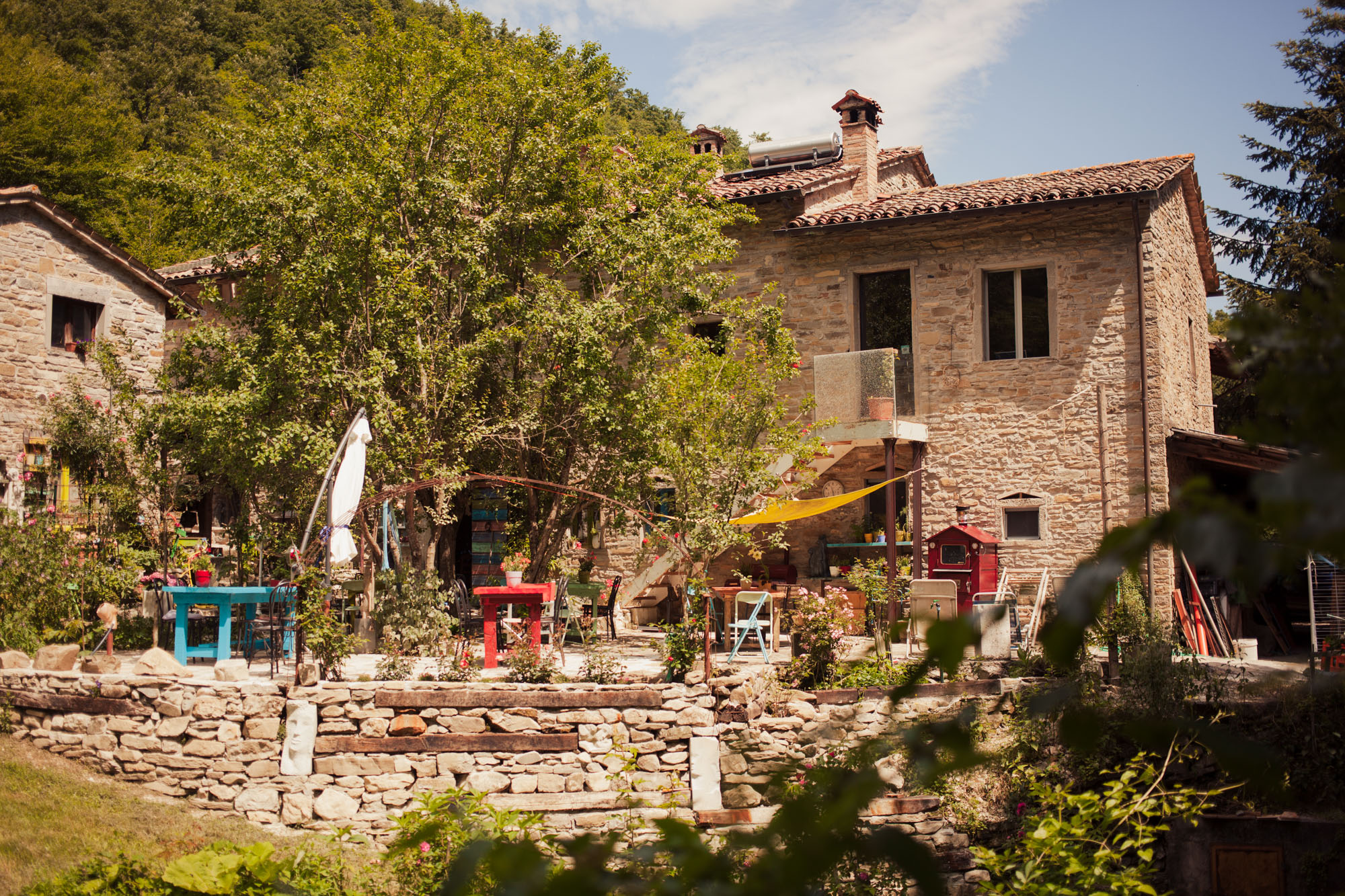
Immediately I noticed that many of the (mostly) women seemed to already know Loretta; “Strega?” they referred to her casually, asking her advice on long-held questions they’d saved up since her last workshop. I could sense undertones of worship and fandom emanating from my fellow participants, a feeling I was definitely starting to share with them.
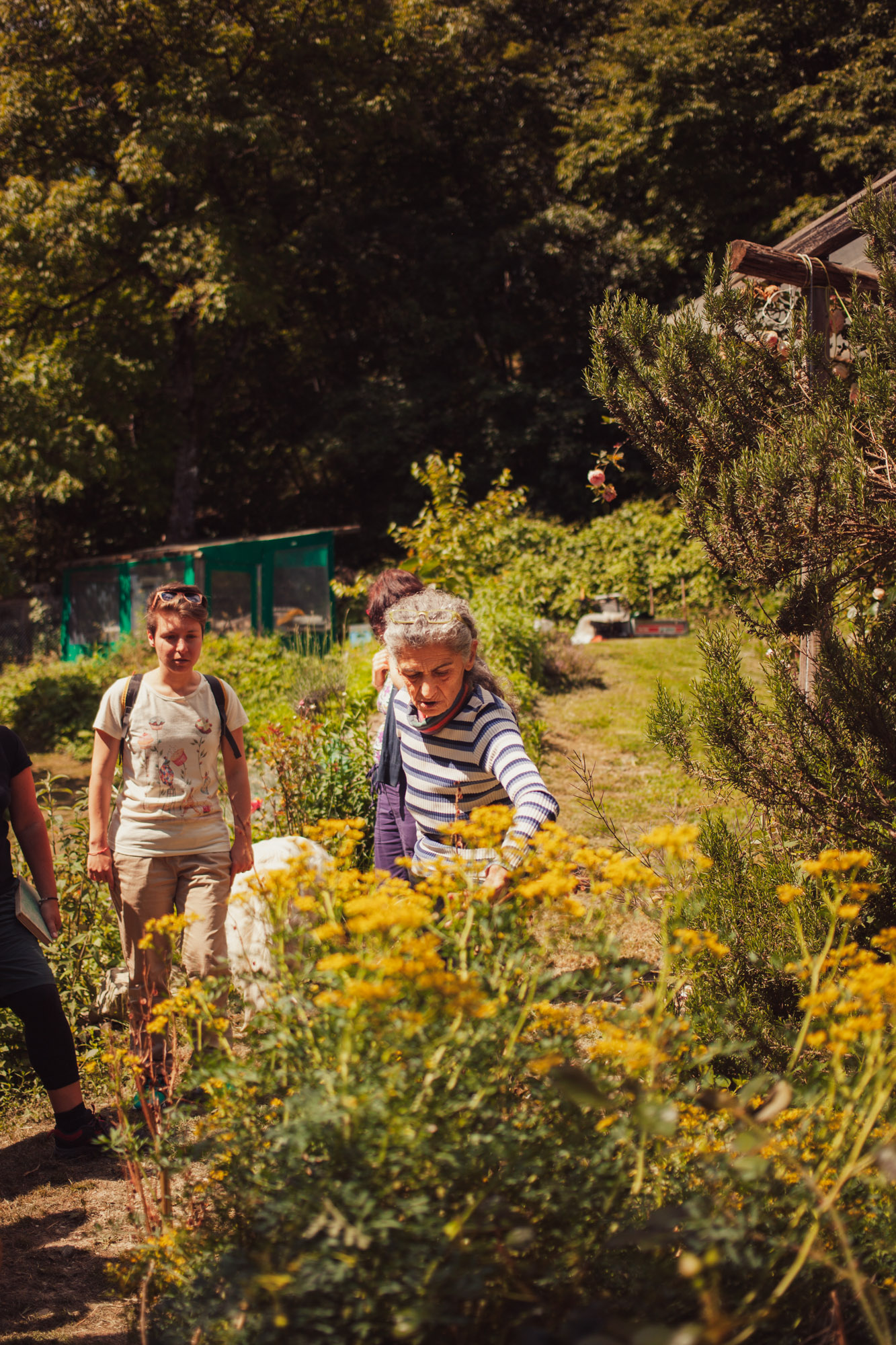
We set off from the ValdericArte villa on foot, 20 of us, trailing Loretta like mesmerised children to a pied piper, stopping and starting in her wake as she paused every few metres to pick up a new plant and list off its uses before moving swiftly on to the next.
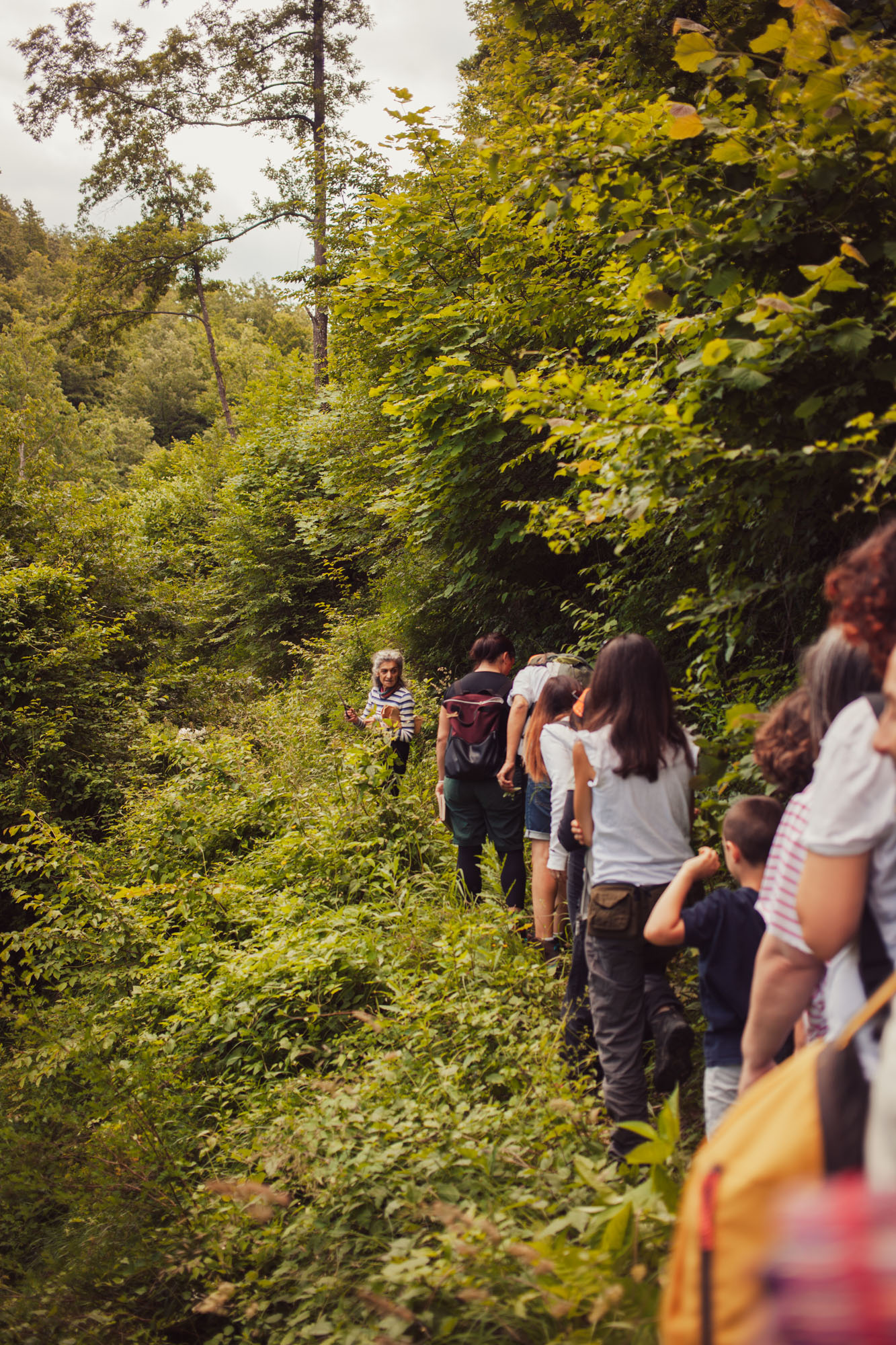

“This one is equisetum arvense plant (horsetail in English), you can soak with this in a hot bath for muscle aches, or infuse it in hot water and drink it like tea.” “This one is stramonio (devil's snare in English), you can smoke this like a cigarette and use it as an aphrodisiac.” “This is bardana (burdock in English), this purple spiky flower... well this one’s just good for everything.”
![]()
![]()
![]()
![]()


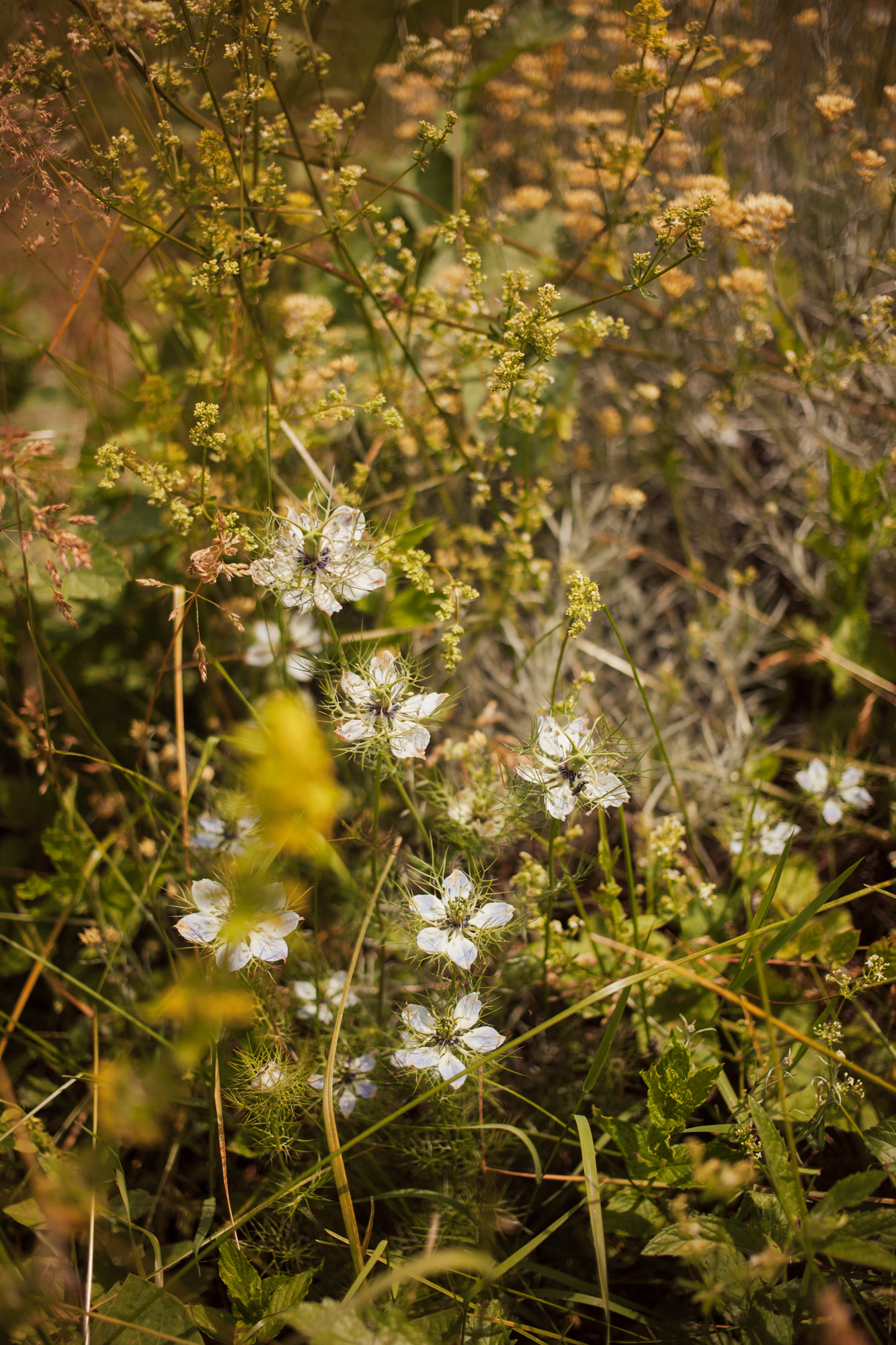
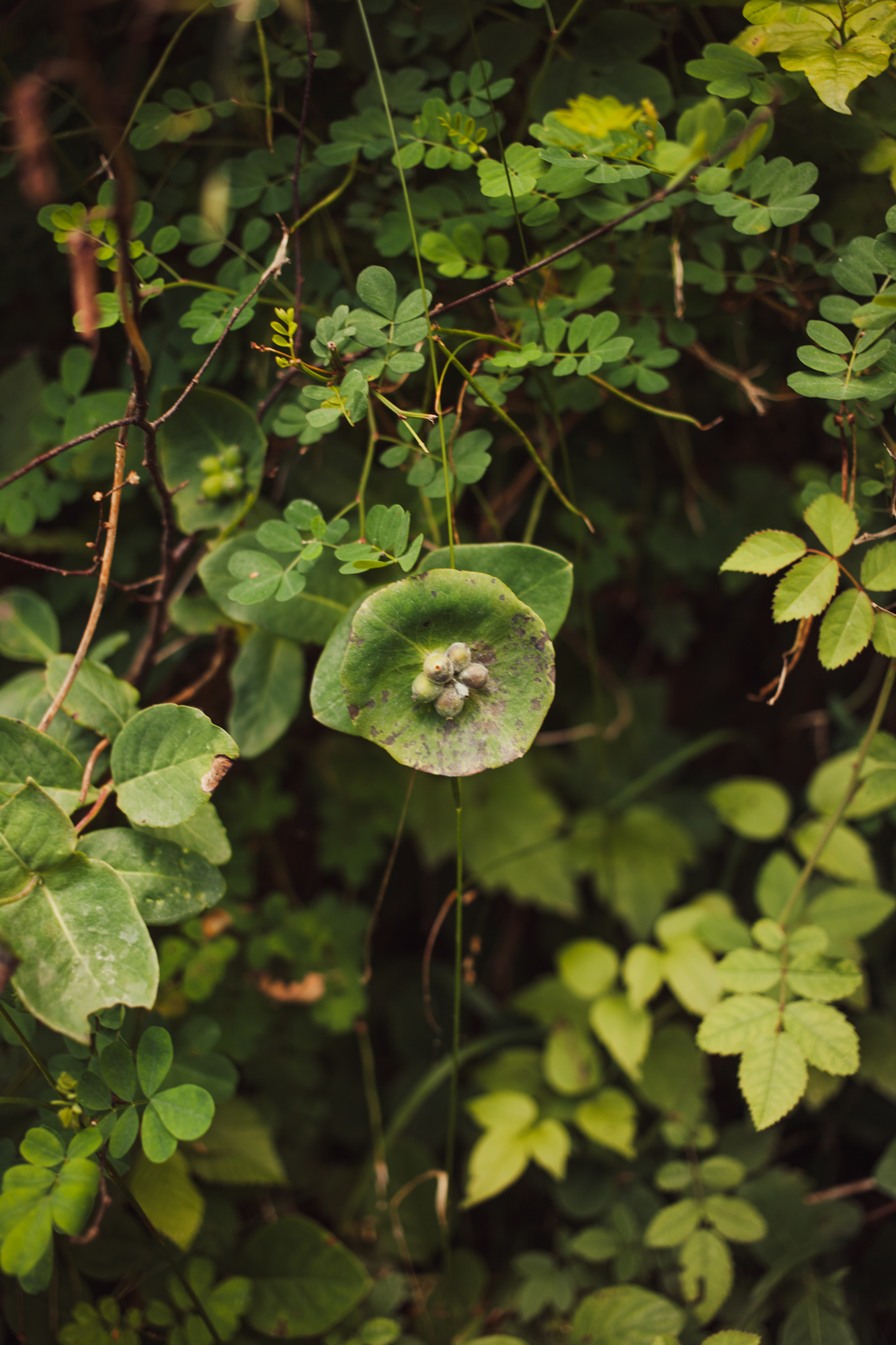
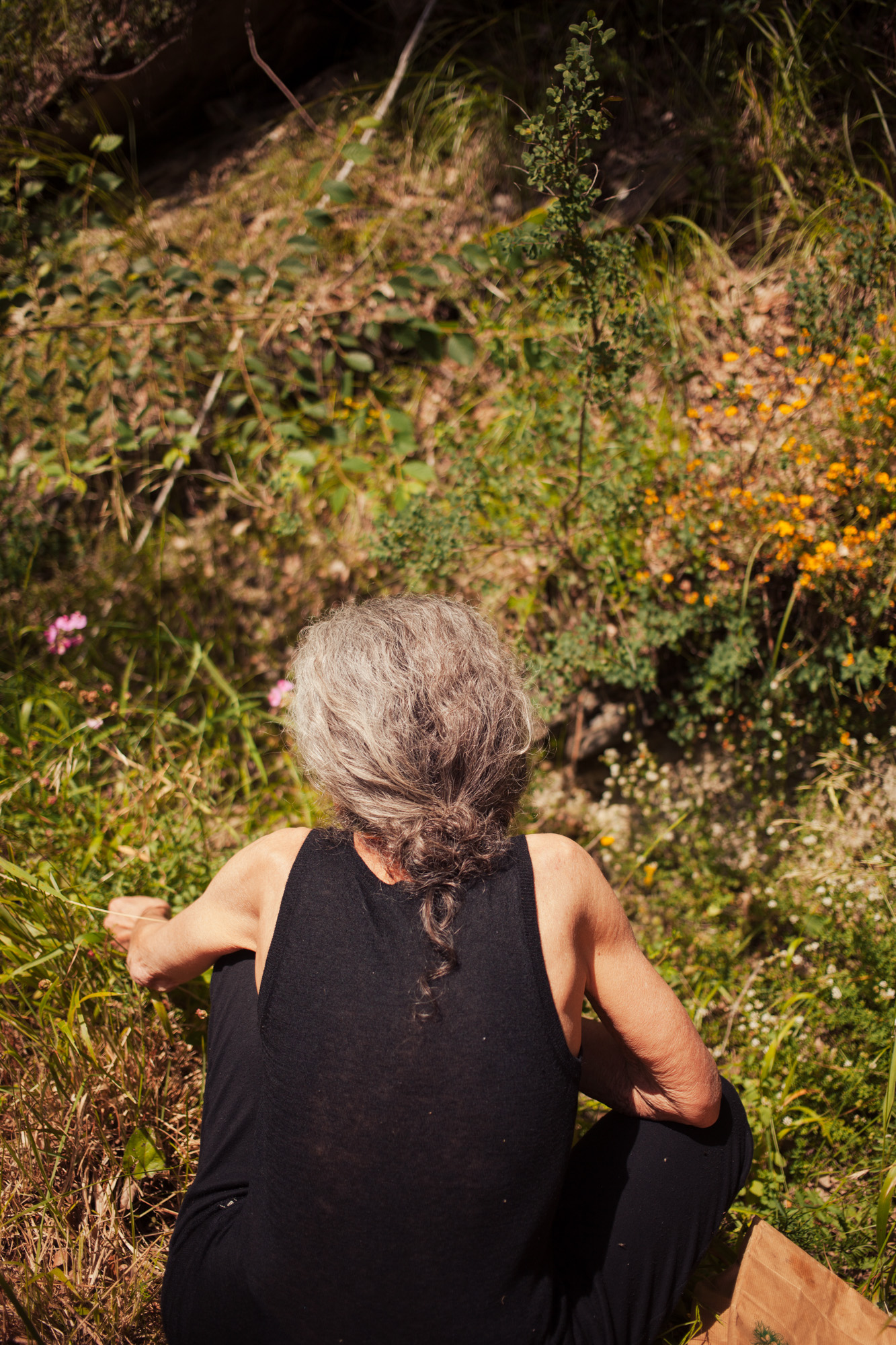
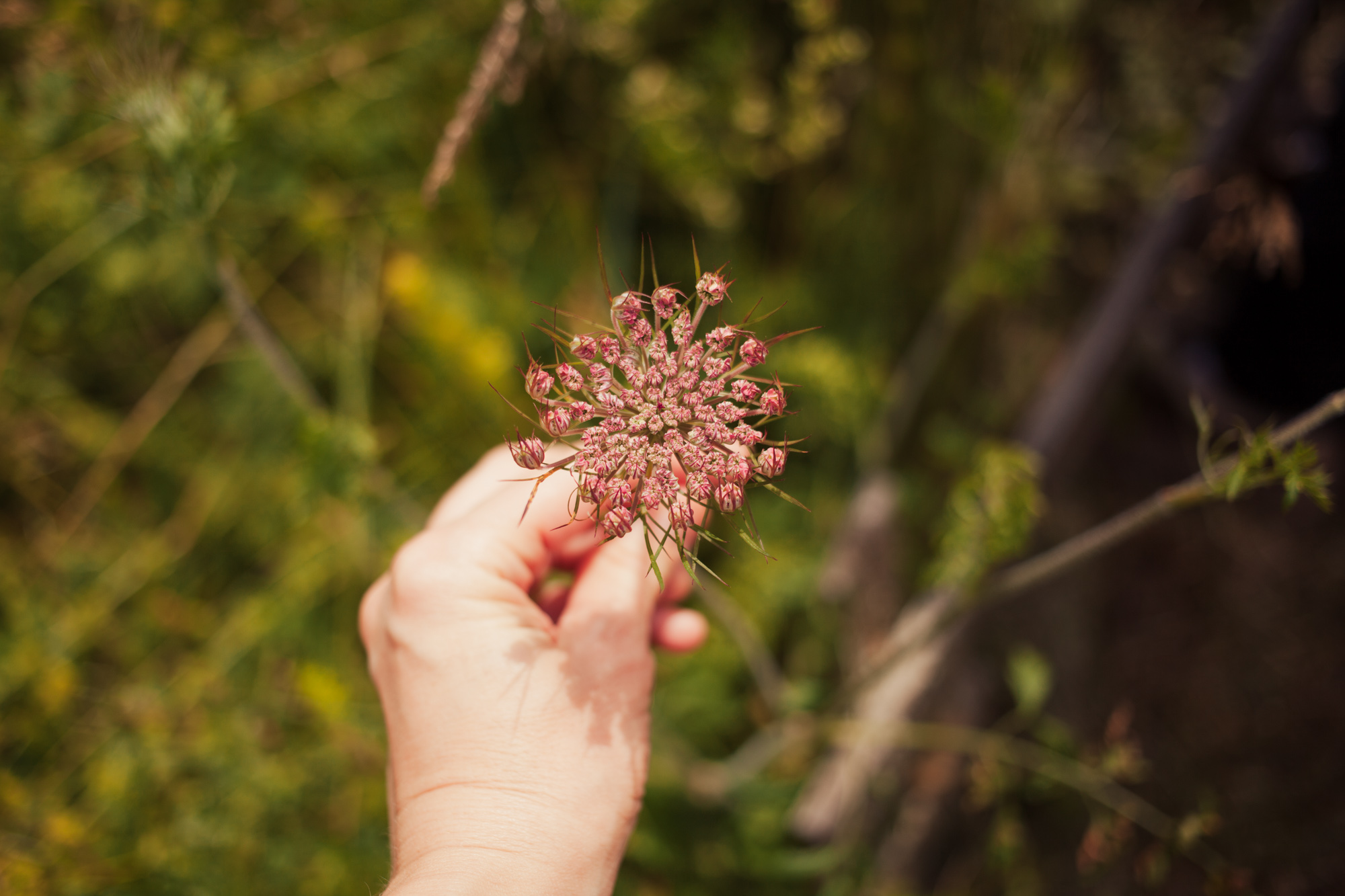
The walk continued on like this for hours, with too many plants for me to record the names of or mention here. Many people collected a specimen of every single plant Loretta recommended, recording the name and its uses in their notebooks, determined to remember this for their own future foraging pursuits.
The benefits of living in a place like the Marche is that nature is always on your doorstep so people can take things like wild foraging pretty seriously, pretty easily.
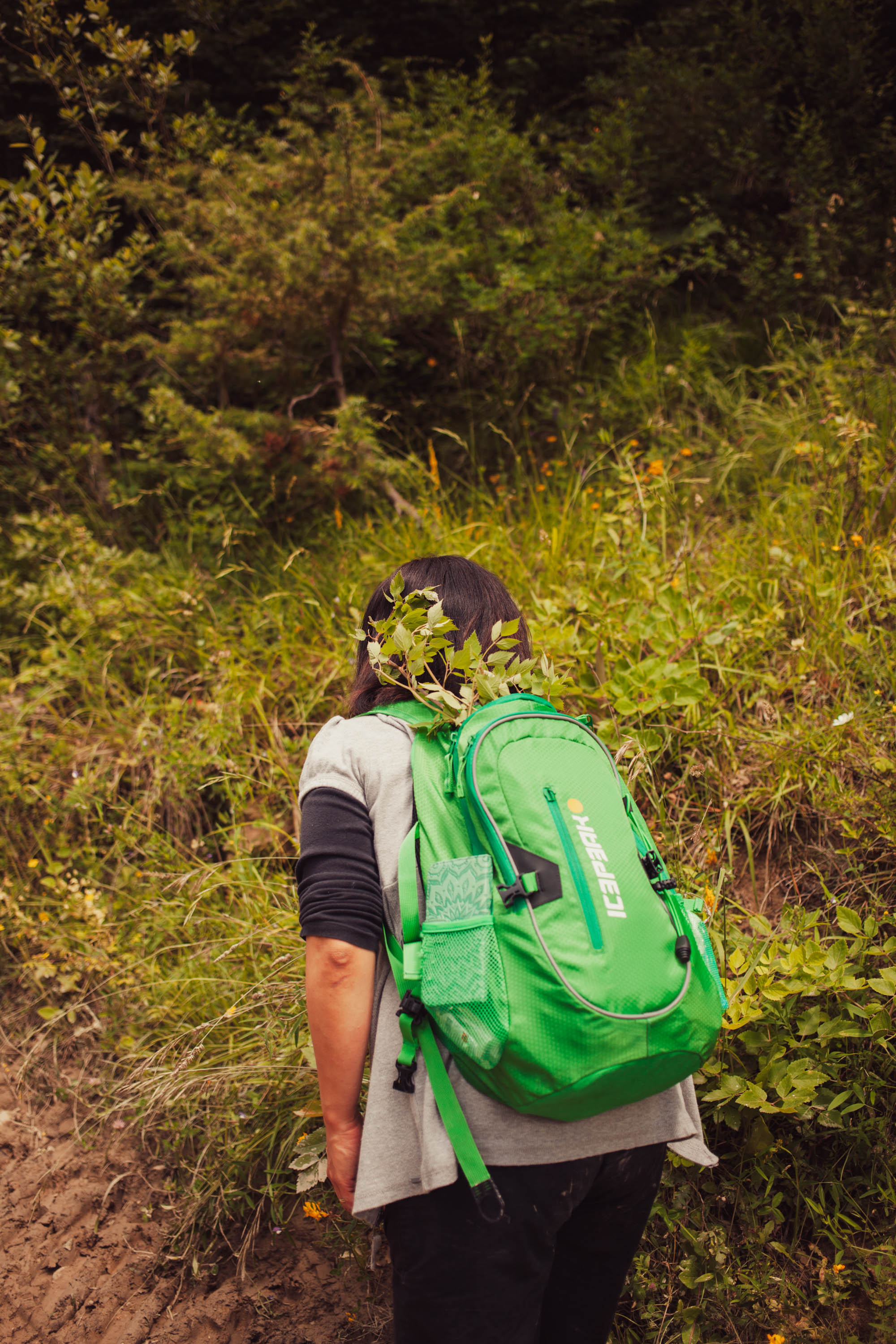
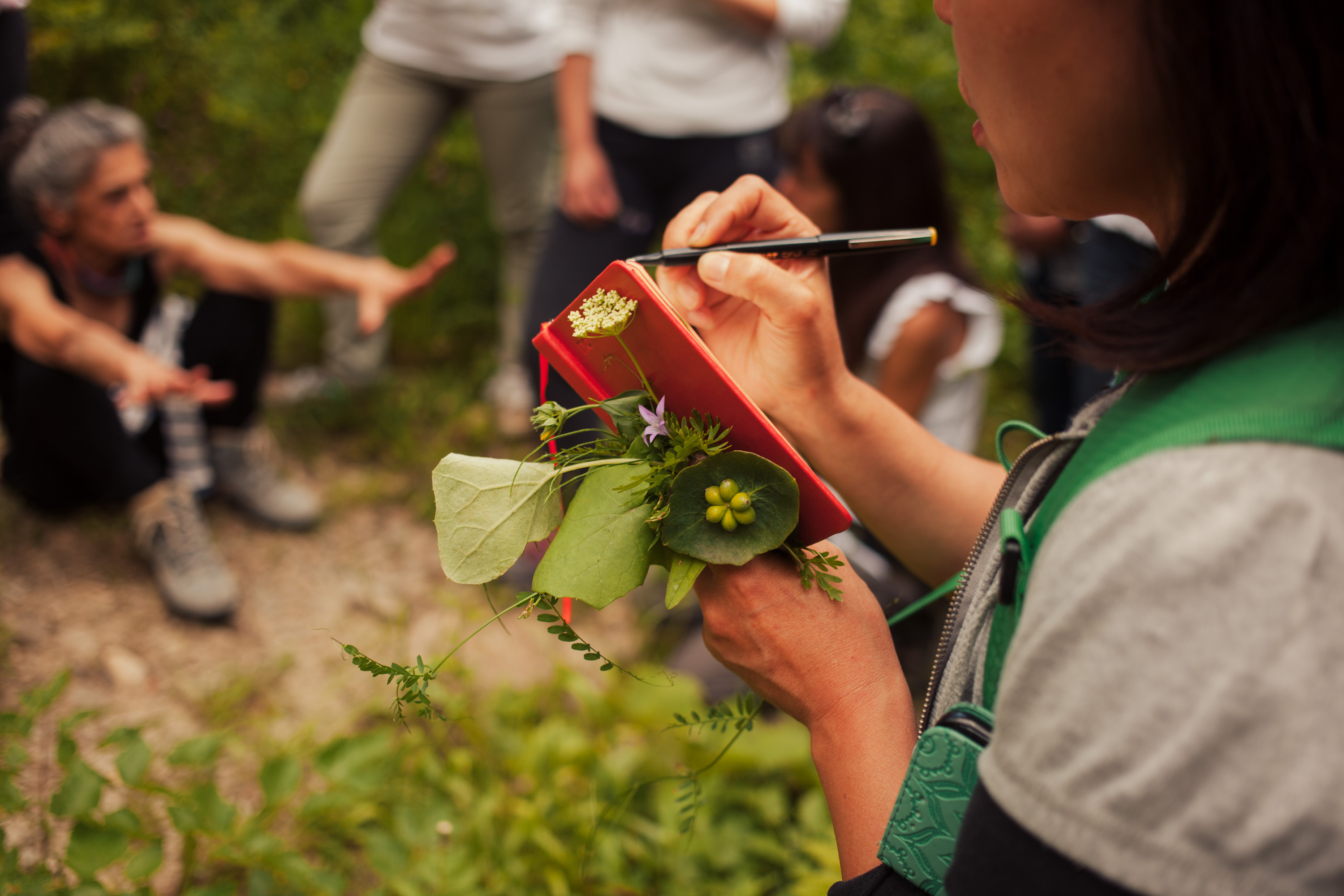
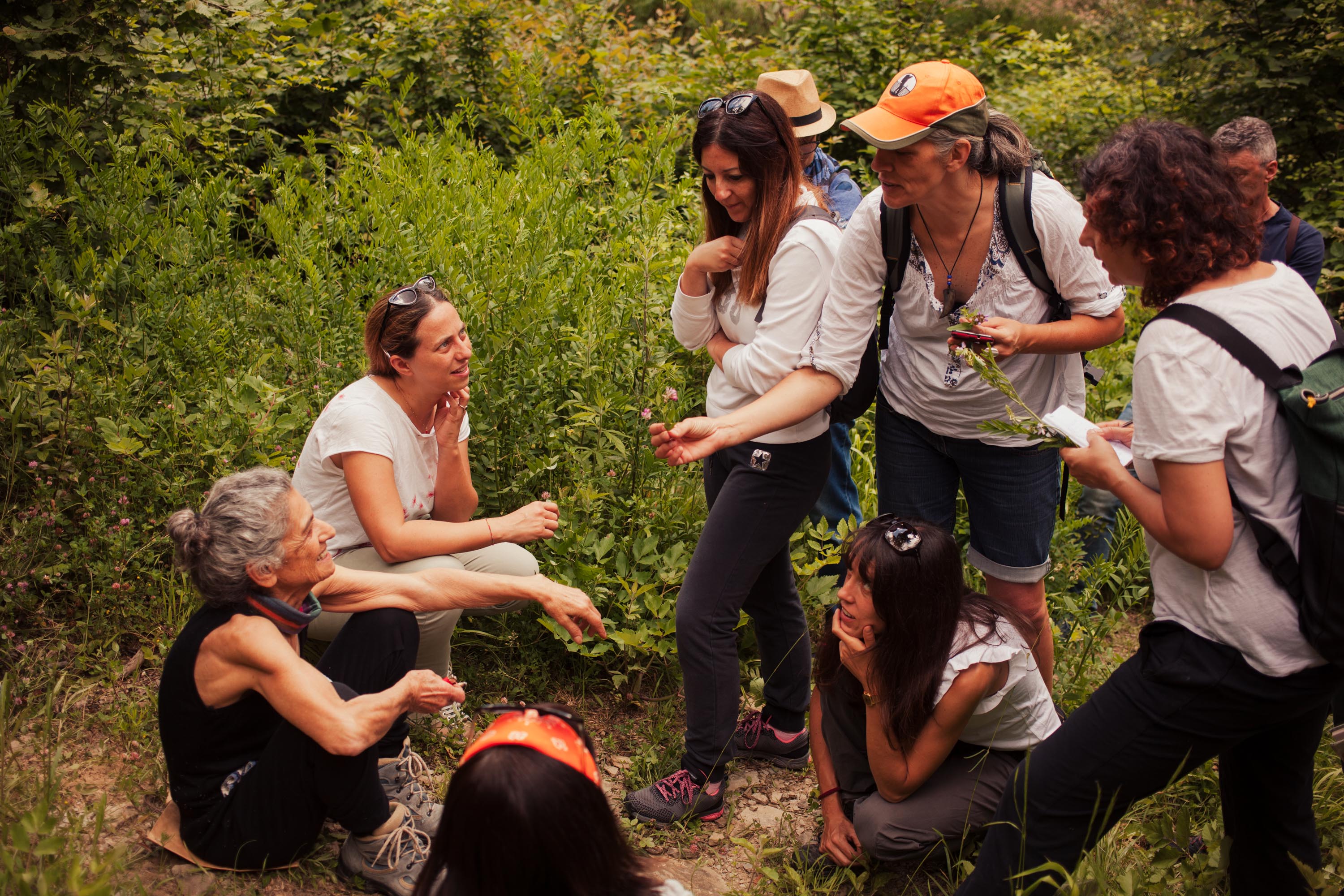

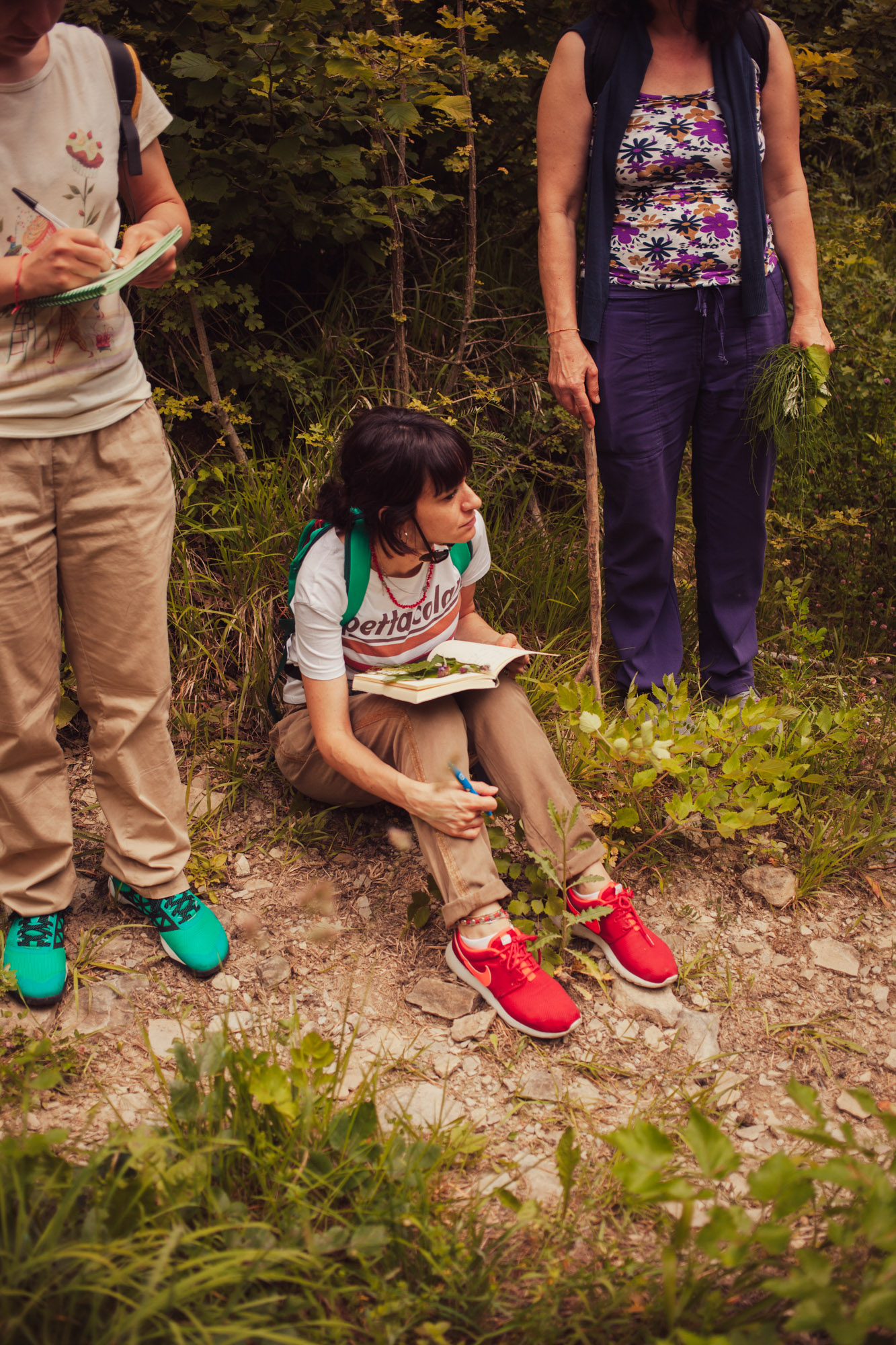
The Loretta Stella I began to see for myself, up-close-and-personal, was warm and friendly, her easy, broad smile amplified by the lines of her face, open to sharing her vast botanical knowledge with humour and a refreshingly no-bullshit approach to what she does. She was nothing like the ‘witch’ figure I’d imagined.
I wondered where and how this name, the Witch of Monte Nerone, had come from. Was it a name she’d been given? Or one she’d chosen for herself?
Loretta’s power to heal using plants seemed to me an increasingly rare one. Perhaps that was why we found ourselves overcome with fangirls feels – the power to use freely available, wild plants, to work with nature instead of against it had become so foreign to us, it seemed like something magical, mystical.
In the last hundred years or so, we’ve learnt to favour the masculine: producing, calculating, forcing, owning, protecting what we’ve got, over the feminine: foraging, waiting, receiving, taking only what we need, healing, sharing. Hers seemed to me a lost art.
I was reminded of these words by Clarissa Pinkola Estés: “When women reassert their relationship with the wildish nature, they are gifted with a permanent and internal watcher, a knower, a visionary, an oracle, and inspiratrice, and intuitive, a maker, a creator, and inventor, and a listener who guide, suggest, and urge vibrant life in the inner and outer worlds.”
Loretta’s work seemed to be about so much more than simply plants and their practical uses.
I wondered where and how this name, the Witch of Monte Nerone, had come from. Was it a name she’d been given? Or one she’d chosen for herself?
Loretta’s power to heal using plants seemed to me an increasingly rare one. Perhaps that was why we found ourselves overcome with fangirls feels – the power to use freely available, wild plants, to work with nature instead of against it had become so foreign to us, it seemed like something magical, mystical.
In the last hundred years or so, we’ve learnt to favour the masculine: producing, calculating, forcing, owning, protecting what we’ve got, over the feminine: foraging, waiting, receiving, taking only what we need, healing, sharing. Hers seemed to me a lost art.
I was reminded of these words by Clarissa Pinkola Estés: “When women reassert their relationship with the wildish nature, they are gifted with a permanent and internal watcher, a knower, a visionary, an oracle, and inspiratrice, and intuitive, a maker, a creator, and inventor, and a listener who guide, suggest, and urge vibrant life in the inner and outer worlds.”
It seemed no coincidence that Loretta’s workshop had attracted 95% women that day. Perhaps we were drawn to her work out of some urge to re-connect with our feminine, “wildish nature”.
Loretta’s work seemed to be about so much more than simply plants and their practical uses.
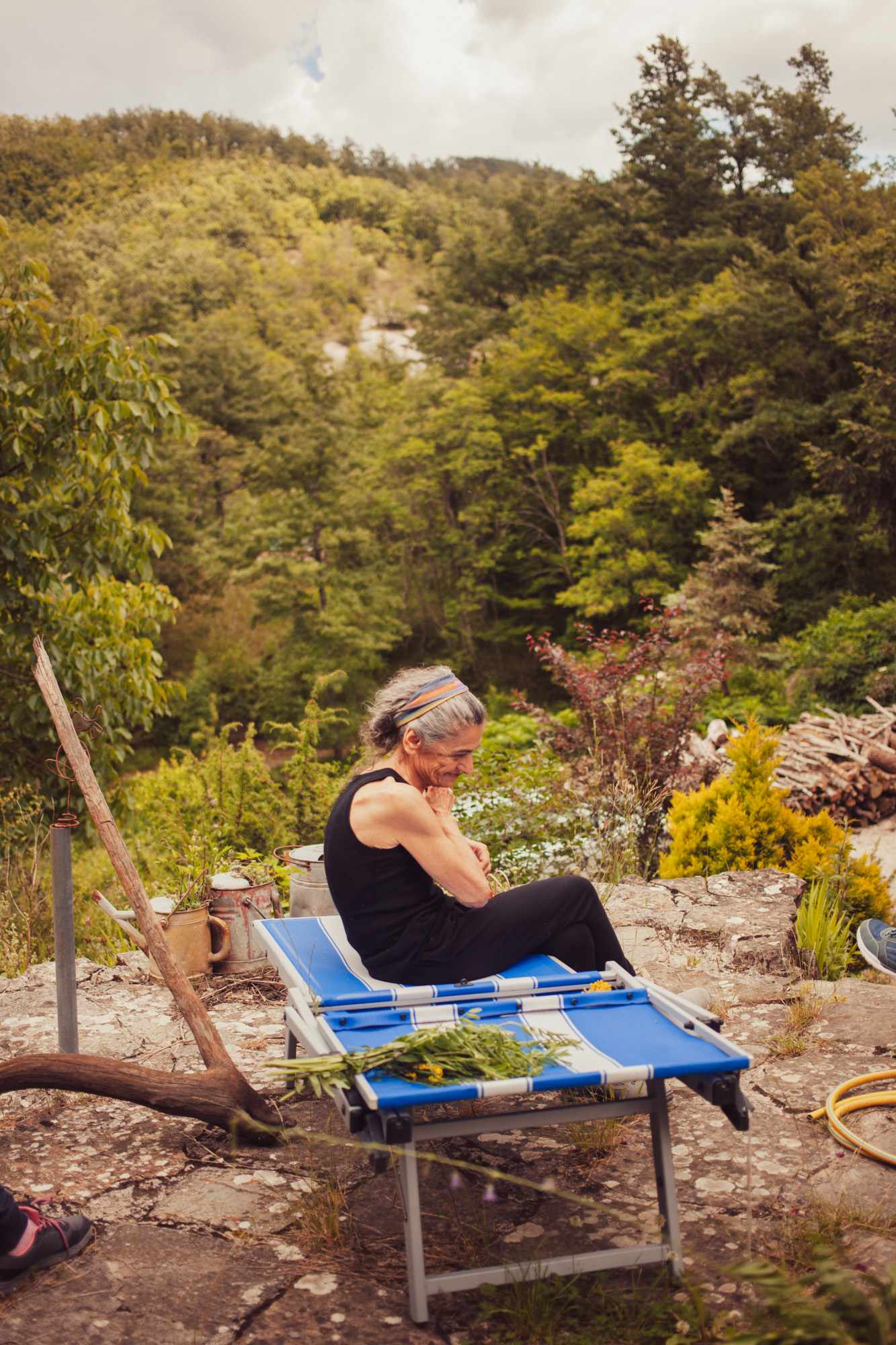

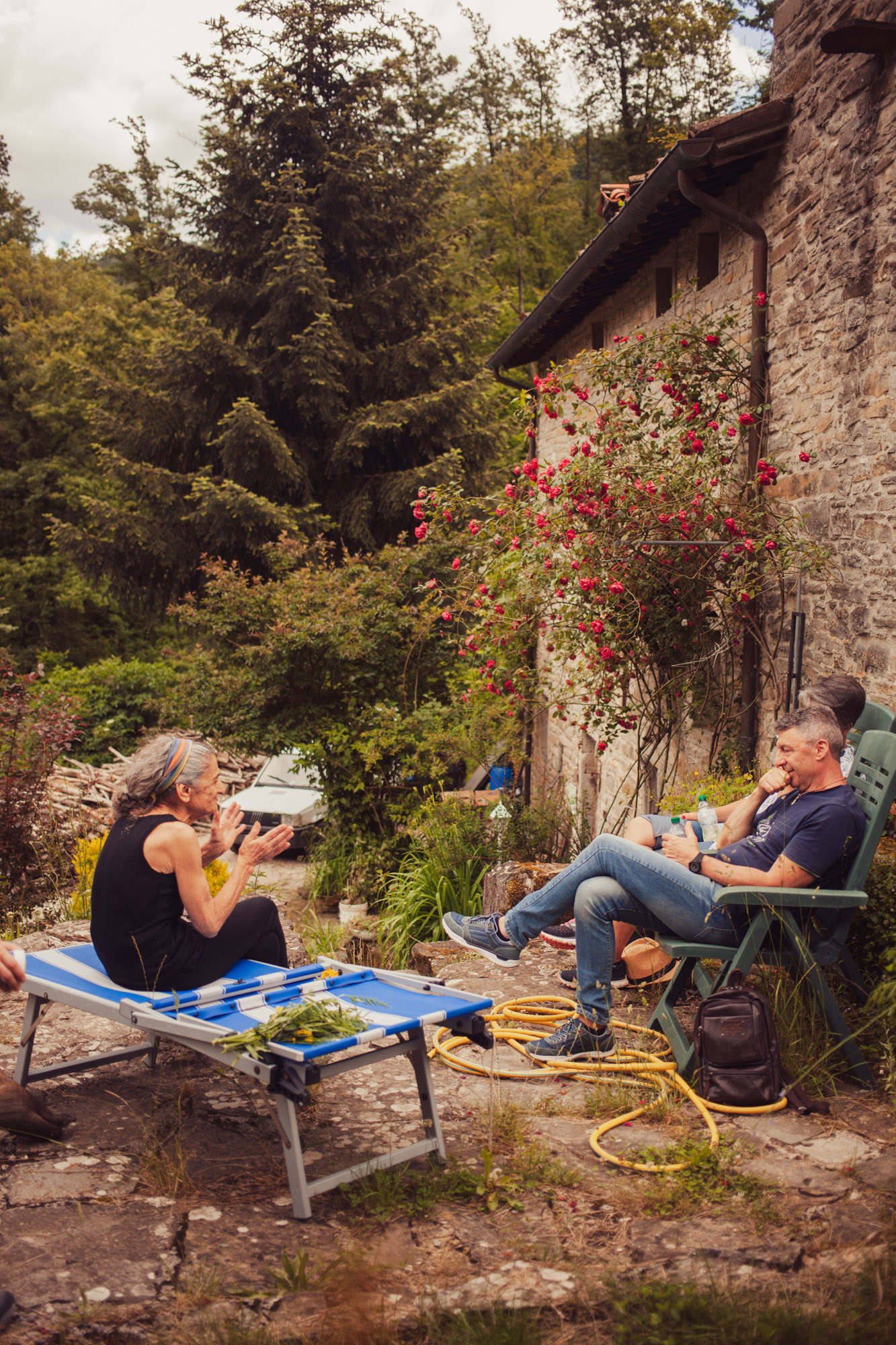
We made our way back to ValdericArte for a very creative vegetarian lunch, using many of the foraged plants, herbs and flowers we’d just been introduced to in the forest as well as ingredients from their garden. Course after course came out of the kitchen: edible flower salad, a wholemeal local fresh pasta specialty, passatelli, infused with hand-ground pink rose powder and red onion, patties made with foraged greens, cheesecake made with berries and visciolato, a sour cherry liquor.
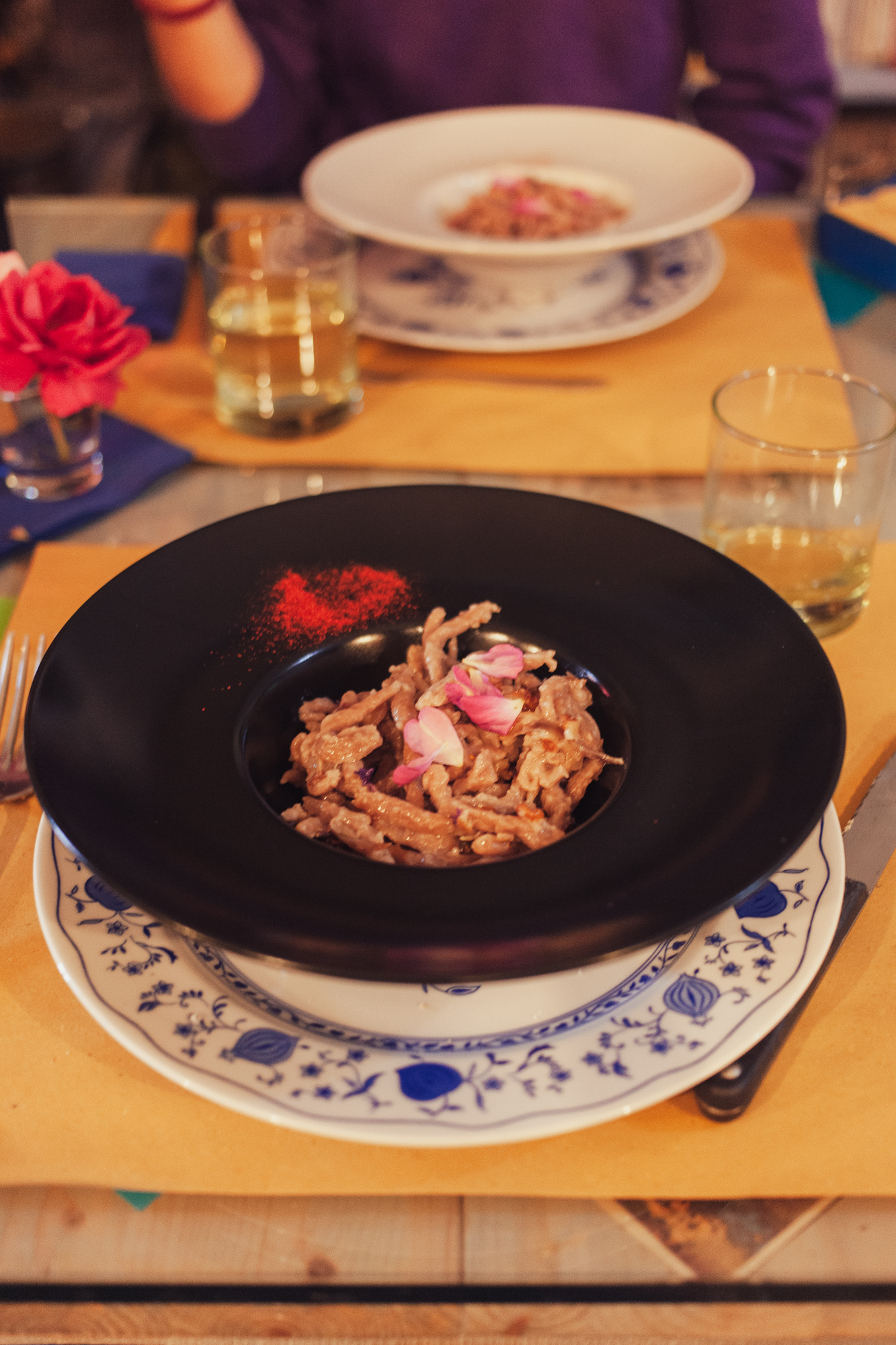
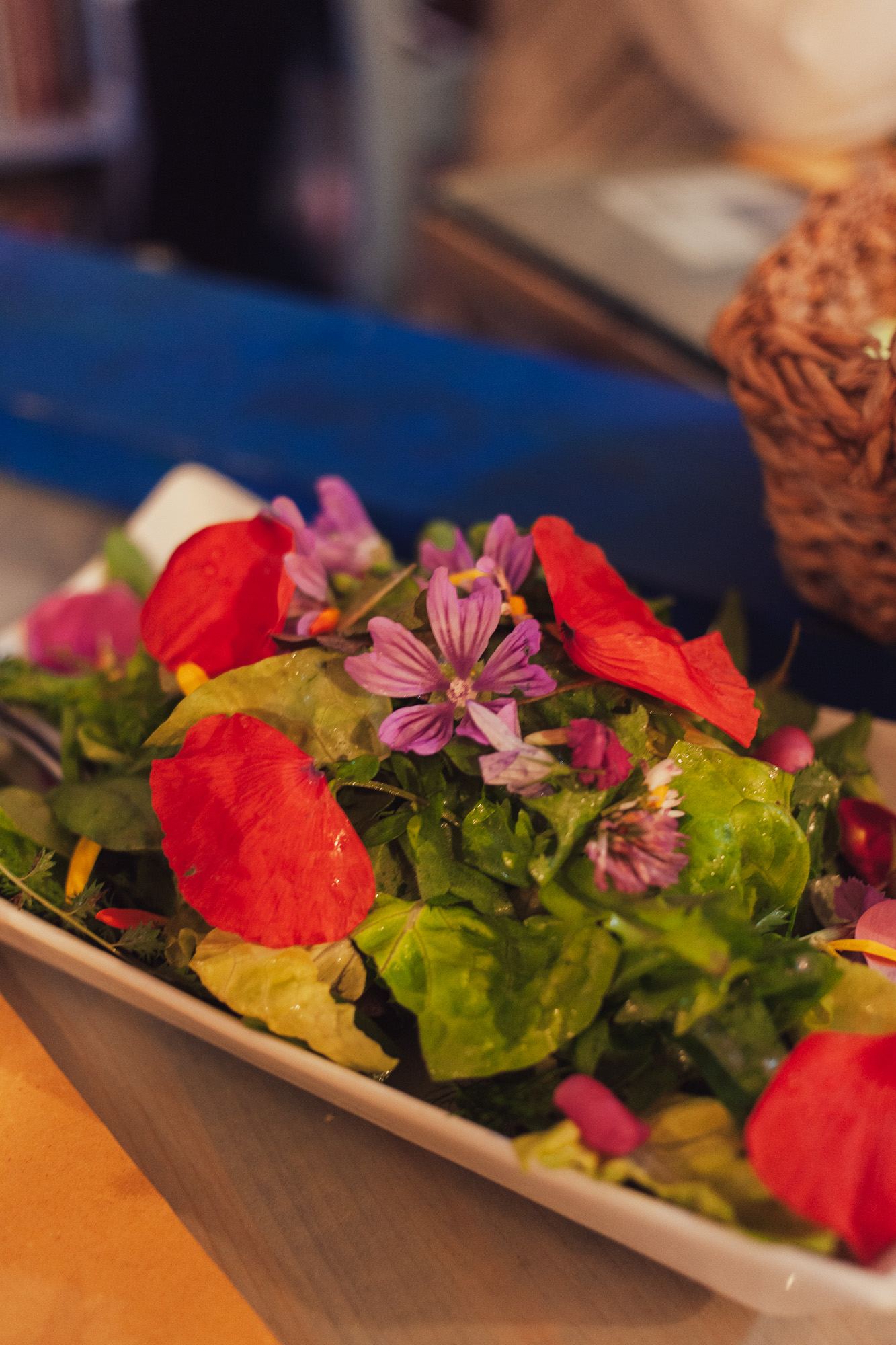
After lunch was a lecture from Loretta, where her witchier, more mystical side did seem to come out. She shared her knowledge further about plants and herbs and read from books about various rituals and sacred places in Italy.
We were given instructions on how to make iperico, st john’s wort in English, oil to be used externally as a skin tonic or to be drunk as a health tonic. We were instructed on the types of flowers you could gather and tie in bunches to hang on the walls of your home as psychic protection – betonica, aka hedgenettle, as well as wheat grain and lavender together will work.

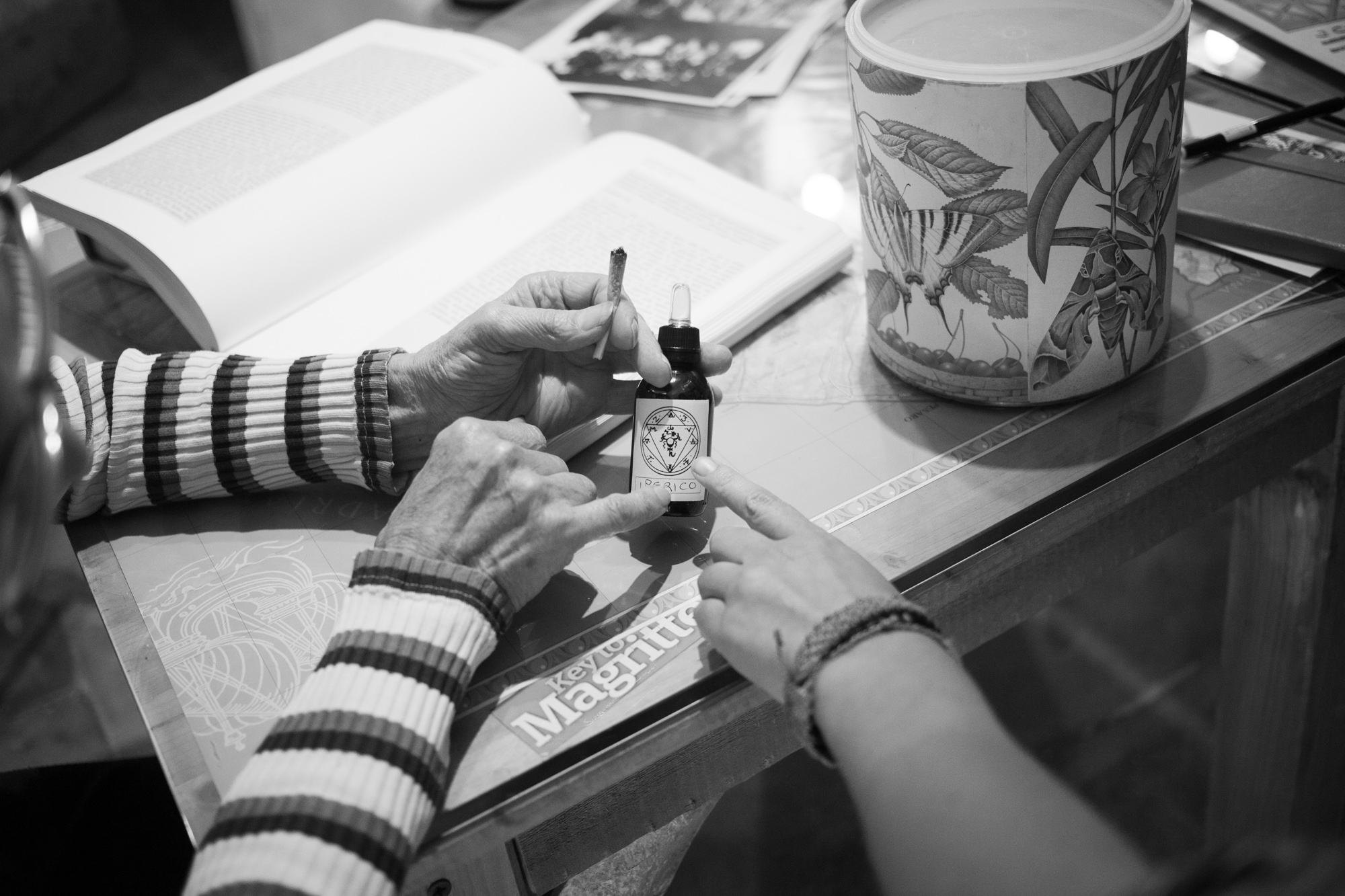
One of the women quizzed Loretta on some technicalities about a ritual she was trying to get right to manifest something in her life, “Should I take the concoction before sleep or after a meal?”, she asked. To which Loretta replied with candor and her no-bullshit approach, “Well you should take it before you sleep. But if you’re a witch, you know that if you really want to make something happen, all you have to do is hold it in mind and it will come about quite quickly.”
I liked that approach, that while we might run around bathing our crystals under the light of the full moon and taking potions in a particular order at a particular time of day, all you really need to do to change your life is to hold what you seek in mind.
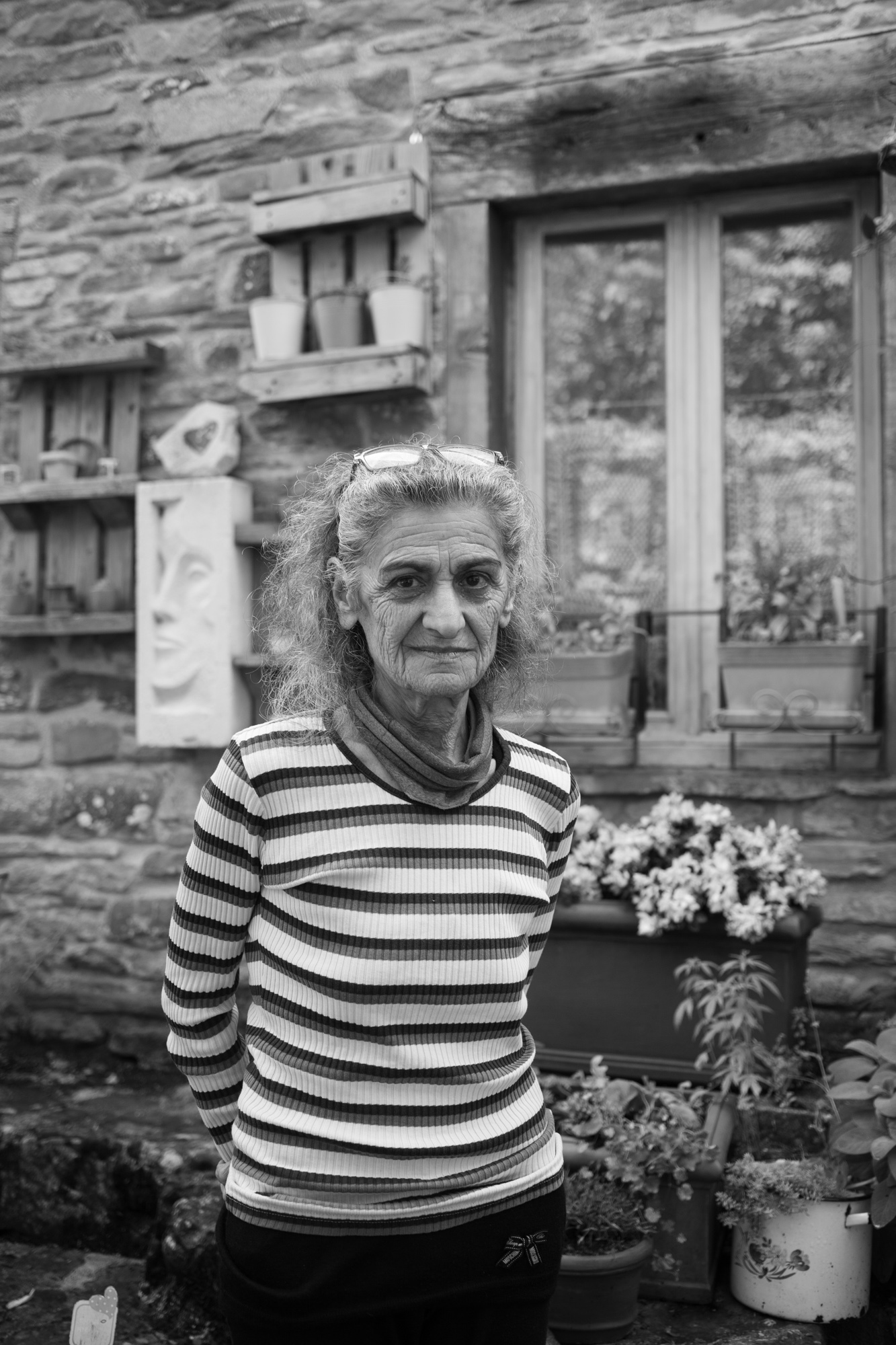
“Which shoe, Strega?” One of the ladies enquired. “Use your intuition, whichever one you think.”, Loretta replied.
—
Loretta Stella often holds open workshops with ValdericArte, follow them on Facebook here or join their mailing list here to hear about new events.
ValdericArte is also open as a place to stay and to eat a meal, for a very secluded, nature-immersion experience.
Make sure to call before coming; as with many places in Le Marche opening times are subject to seasonal changes!
